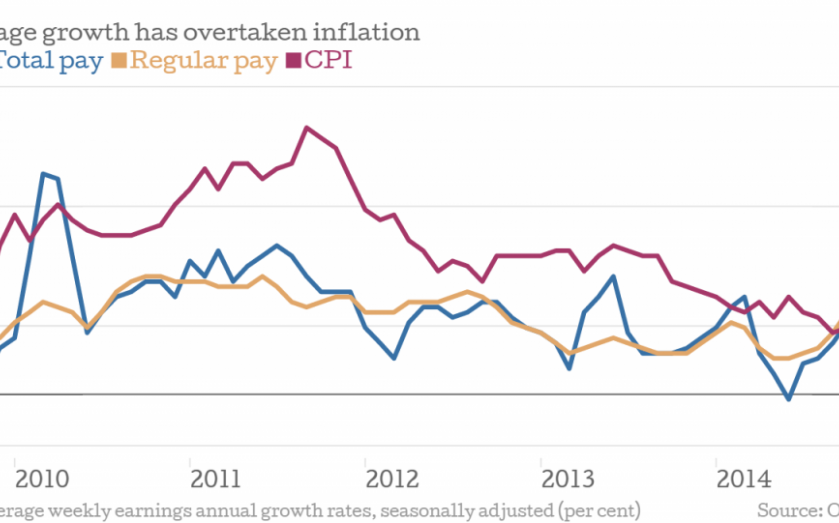Five charts that sum up the latest UK wage growth and unemployment report

Unemployment is down again, but the real news is that wages sneaked above inflation in October, back when inflation was up at 1.3 per cent.
According to data from the Office for National Statistics, both regular wages and wages including bonuses were rising above inflation, at 1.6 and 1.4 per cent respectively. This is a welcome fillip for the government: earlier in the year the Bank of England’s governor Mark Carney said a turnaround wasn’t expected until some time next summer.
Average weekly pay was £456 per week (gross), excluding bonuses and £483 per week (gross) including bonuses.
Unemployment fell again but the drops are getting slower. The economy added 63,000 jobs in the three months to October, the smallest increase in jobs added since July to September 2013. Economists had expected unemployment to dip by slightly more to 5.9 per cent. The upshot is there are now just under 2m unemployed people in the UK, and 9m not looking for work.

The puts the UK in pretty good company globally: ahead of the EU labour market and tracking the US rate of 5.8 per cent.

The other piece of good news is the source of new roles over the last year. The number of part-time jobs has actually fallen, while full-time roles have increased dramatically. Government training schemes aimed at getting people back into employment also saw a drop.

Unsurprisingly the fall in the unemployment rate is accompanied by a fall in the claimant count, the measure of people claiming benefits predominantly because they are unemployed.

The report is generally good news for the government but we shouldn't get too carried away. George Osborne was quick to point to the latest inflation figures of one per cent as proof that the cost of living crisis is easing. The government, however, is not responsible for inflation: that's the mandate of the Bank of England, which strives to keep the rate at two per cent. What is more, inflation was dragged down by the tanking of oil prices.